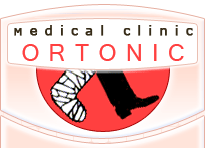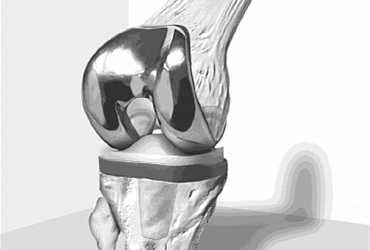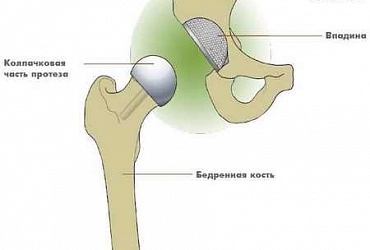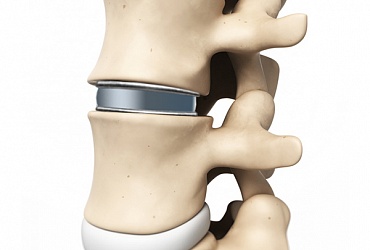Artificial hip joint
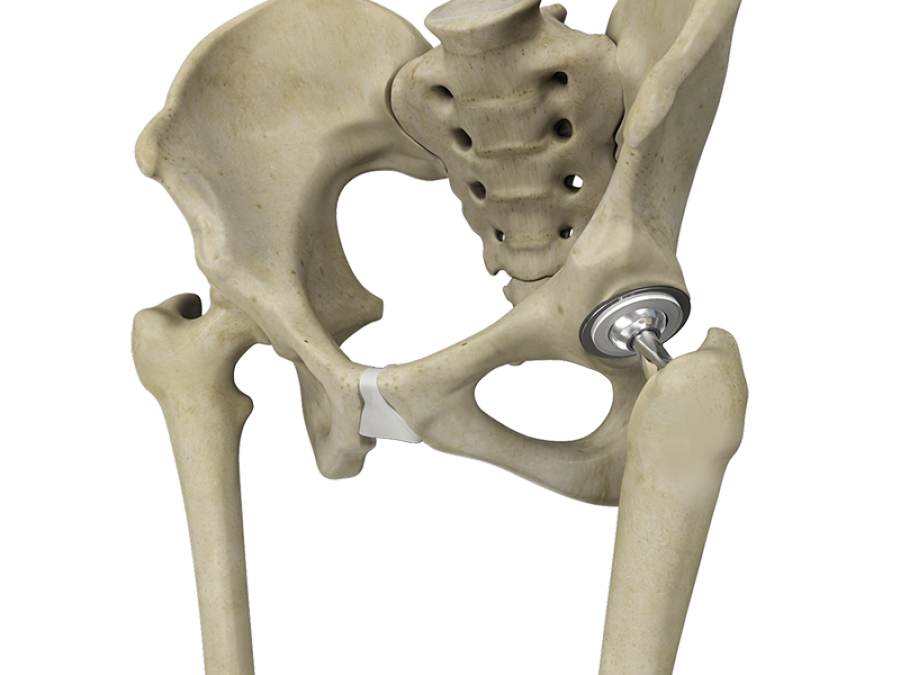
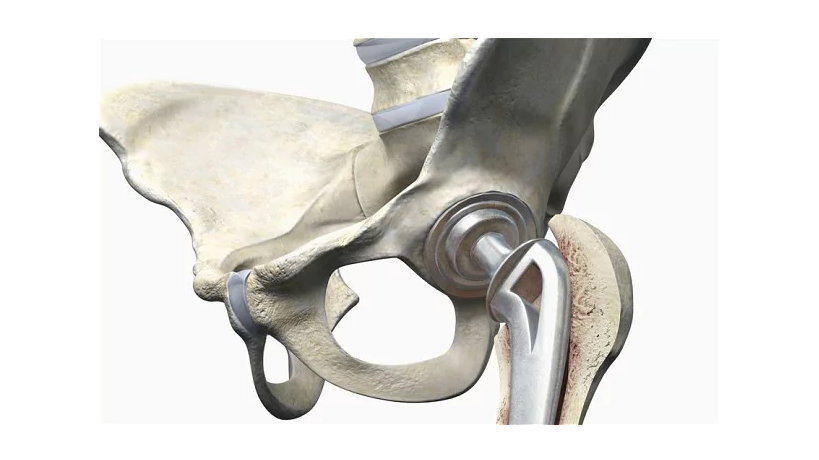
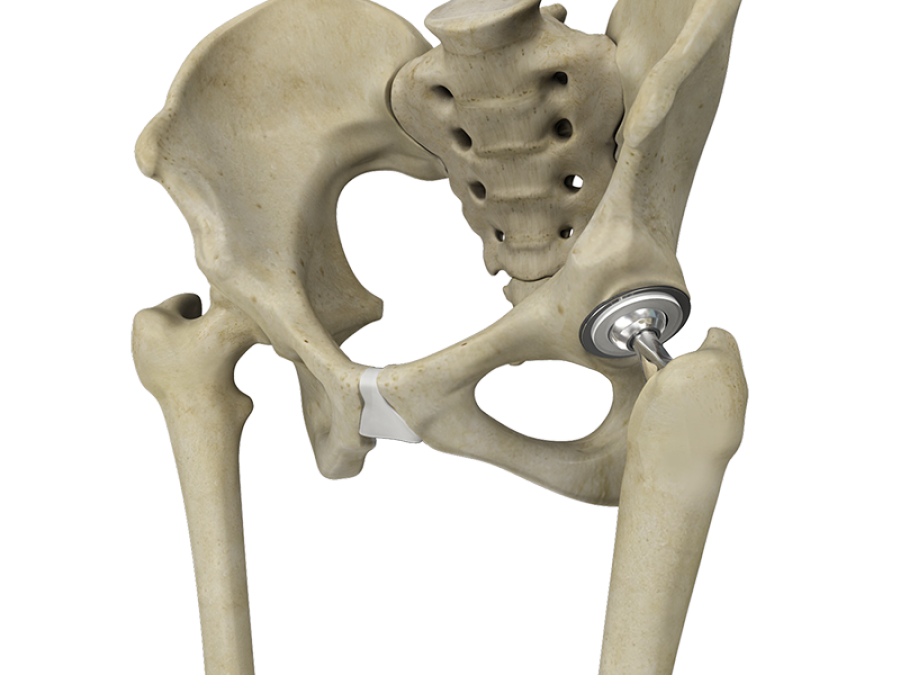
ICON - to start a new life
Dear patients!
If you are already faced with the need for hip replacement, then with this information we want to help you understand the advantages of the ICON joint surface prosthesis and make the right choice. Simultaneously, this should serve as a guide for you in the early postoperative period and subsequent rehabilitation.
Please pay attention to the fact that you must first of all follow the recommendations of your surgeon who knows your individual characteristics.
Reasons to replace your joint with an artificial prosthesis
Restriction or inability of normal movement due to pain and deformity in the joint.
The most common cause of joint deformity is primary and secondary arthrosis or degenerative-dystrophic disease of the musculoskeletal system, which is characterized by progressive destruction of the cartilaginous surface of the head and cavity, which leads to a sharp narrowing of the joint gap.
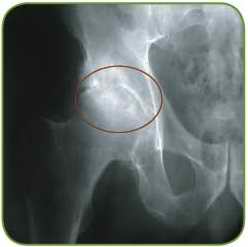
The man is 49 years old. Primary coxarthrosis
Secondary arthrosis of the hip arises against the background of dysplasia or congenital dislocation of the thigh, aseptic necrosis of the head and femur, Perthes disease, suffered trauma (bruise, fracture, dislocation, microtrauma), inflammatory process (coxitis).
The pain that accompanies the process of destruction of the cartilaginous surface of the joint, already at the initial stages forces you to spare the aching leg and restrict movement in the affected joint, which contributes to the appearance of contractures.
Artificial thigh jointFor prosthetics, two types of prostheses are used: a total endoprosthesis (TEP) and an articular prosthesis (SSP).
In total endoprosthetics due to the traditional form of the prosthesis, removal (resection) of the neck and the head of the hip joint with subsequent destruction of the bone marrow of the femur is necessary for implantation of the prosthetic foot with the head and the corresponding cavity.
An undeniable advantage in the prosthetic repair of the ICON articular surface is that only the damaged surface of the femoral head is removed by grinding and grinding.
The ideal match with the size and shape of the hip joint joint prosthesis determines the following benefits:
Preserved natural geometric relationships, which avoids the difference in the length of the lower limbs.
As a result of the preservation of anatomical structures, natural sensations of movement are also preserved.
The load exerted on the bone remains unchanged, which preserves the normal structure of bone tissue and prevents the development of osteoporosis.
The metal-metal friction pair of the corresponding human anatomy provides for an ideal joint stability.
The anatomical dimensions of the cap part of the prosthesis determine the physiological volume of movement in the joint.
The ideal correspondence of the metal-metal friction pair provides the minimum known coefficient of friction between the joint surfaces, which contributes to the maximum of its light and long-term function.
ICON ICP consists of a high-grade alloy, which has a high degree of strength.
ICON cavity is a cementless ideal hemisphere with a layer of porous hydroxylapatite applied, which provides the fastest adaptation in the bone tissue and thereby its stability and stability of the prosthesis.
![]()
Components of an ICON joint surface prosthesis
What else do you need to know ....
The ICON joint surface prosthesis is made from a high-alloy cobalt-chromium-molybdenum alloy with a high carbon content according to ISO 5832-4 of the German industry standard.
ICON PCB is produced by a single casting without subsequent heat treatment, which keeps a high content of planar block carbides, which ensure the highest degree of hardness of surfaces and its wear resistance.




The illustration shows a transverse rupture of the outer surface of the cavity. The spherical surface structure creates conditions for the biological integration of the acetabulum into the bone weave and its optimal primary stability. Clearly visible tree-like carbide blocks and a grain-free border that is achieved with a single casting.
Four small anti-rotation wings on the cavity provide the primary, as well as in the natural cavity, stability of the implant.
The ICON cavity is additionally layered additionally layer by layer approximately 65 μm hydroxylapatite (GAP), which promotes the best integration of the implant in the bone and provides secondary stability (GAP is much softer than CoCr, and during dissolution eliminates the emergence of a connective tissue capsule).
In this metal-metal friction pair, thanks to the high-quality polishing of the contacting surfaces, an optimal joint gap is created which, on the one hand, ensures the penetration of the liquid and thereby creates a hydrostatic lubricant effect, and on the other hand prevents wedging. Thus, simultaneous reduction of adhesion and friction, contacting surfaces, provides the most long-term function of the prosthesis.
Many years of experience with metal-metal friction pair did not reveal any negative impact on the patient's body.
The increase in the risk of cancer after implantation of the prosthesis after 28 years has not been established. It should be noted that very rarely there are allergic reactions to cobalt and chromium, and therefore it is not possible to completely eliminate individual intolerance, which, however, is not an individual reaction to the prosthetic PCI, since this combination of metals is the basis for all types of prostheses.


Modular head ICON
The modular head system is represented by a similar metal-metal pair of friction, as with the prosthesis of the articular surface. Being, in its essence, universal, the modular head is successfully used with total endoprosthetics with all traditional prostheses, which creates an opportunity for patients to improve their quality of life.
· restoration of natural function of the joint
· volume of motion in the joint up to 160 °
· optimal joint stability
· minimal risk of dislocation
· Absence of any contraindications for the modular head.
Technical specification of ICON modular head
· Ideal metal-metal friction pair
· Strength due to the high content of carbides
· Optimum joint space
· Ideal matching of contiguous surfaces
· The leg of the prosthesis with the cone 12/14 is used
· Large selection of hip prostheses
A comparative assessment of the volume of movement in the hip joint using the conventional and modular ICON head
Operation
Prosthetics of articular swelling of the SCP is essentially an organ-preserving operation, in which the neck, head and bone marrow of the femur remain, and only the damaged cartilaginous surface of the femoral head is removed.
This intervention is minimally invasive, since this operation is performed through a minimal incision, in contrast to the traditional approach, and is about 10 cm. This, in turn, reduces the patient's risk for bleeding, embolism, infection.
The operation can be performed both with complete anesthesia and under regional anesthesia, which is discussed individually with the anesthesiologist and your surgeon.
After operation
The postoperative period is tailored to your individual characteristics, which is discussed with your surgeon.
After the operation and exit from anesthesia, you are undergoing complete anesthesia therapy.
The next day you should be ready to get out of bed. The first walk is possible after the second day. In the following days, the length of your walks gradually increases and you can begin to train properly to climb and descend the stairs in such a way that you can manage without help at the time of discharge.
But it is necessary to ensure that in the first 6 weeks the operated leg is not overloaded.
Although, it should be noted that there are no clear prohibitions on the load, and you just need to be guided by your feelings.
What you need to do and what not to do.
What you should do:
· In the first week you need handy means for walking.
· Cold on the hip joint reduces pain and swelling.
· If everything goes well with you, then after 6 weeks you can walk around the room, but only to get a newspaper.
· You should clearly remember that the physiological process of bone healing lasts a minimum of 6 weeks.
· In the first 6 months, watch your speedy reaction.
· Pain for you should be the boundary of what you can and can not do.
You are not allowed:
· The next 8 months to throw a leg behind your another leg.
· The position of your knee should not be above the hip.
· Do not lean forward when you sit or want to sit down.
· Do not lift anything off the floor when you are sitting.
· Do not turn your foot too much in or out.
